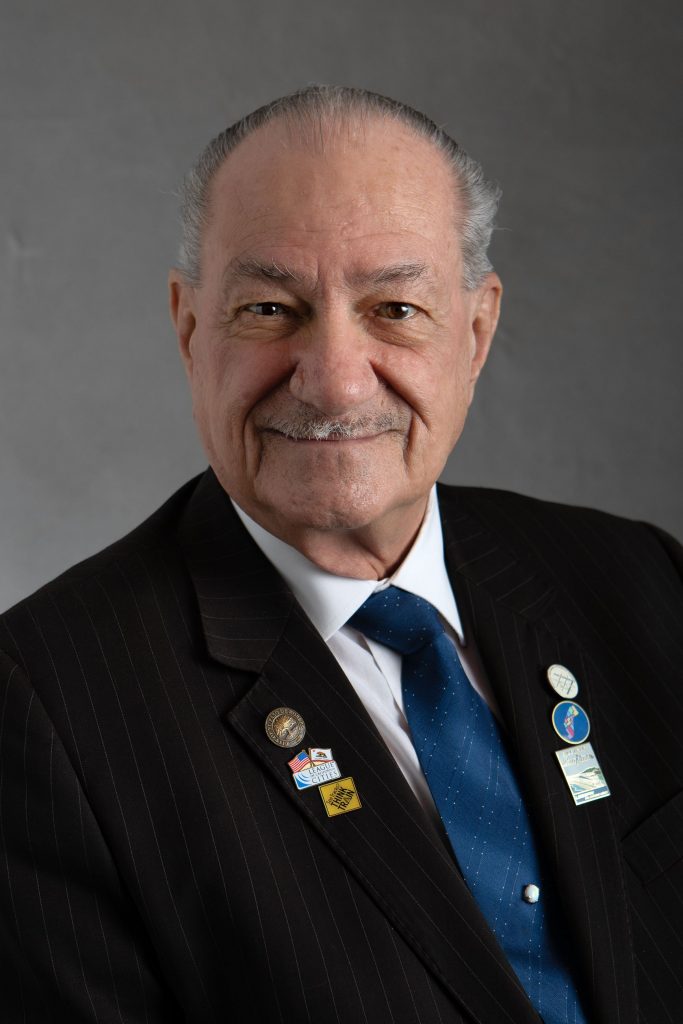Paso Robles, CA — Paso Robles City Councilman Fred Strong has worn many hats across decades of service in his community. From co-founding Paso Robles’ first Youth Soccer program in the 80s to more recently working on a revision of the Paso Robles Airport Master Plan and serving as transportation chair for the National Association of Regional Councils, Strong is an experienced civic leader.

This experience made him a natural addition last year to the Transportation and Infrastructure Services Committee (TIS) of the National League of Cities (NLC), a group that advocates for U.S. cities, towns and villages representing more than 200 million people. The TIS Committee leads NLC’s policy and advocacy work on connectivity for all modes of transportation, including a subcommittee on rail that Strong chairs.
“We’ve focused on safety, access and cost,” said Strong about his work on the rail subcommittee. One of the big safety issues, he said, centers around at-grade crossings—mitigating pedestrian trespassing into railroad rights-of-way, securing right-of-way in urban areas and for bridges, as well as identifying ways and places to eliminate crossings.
The NLC is also a leading advocate for fixing the Highway Trust Fund, which faces huge funding shortfalls from inadequate revenue. The fund has had to borrow some $143 billion of general taxpayer funds for road and bridge repair since 2008 alone. We spoke to Strong about the problem, how it can be addressed and the future of transportation.
GoRail: How do you think Congress can address shortfalls in the Highway Trust Fund?
Mr. Strong: Well, first of all, I think the current methods to fund maintenance and repairs have become outmoded and discriminatory. Today we use fewer petroleum products and more electricity to power our surface transportation—these types of vehicles are more expensive than the older type and therefore are primarily owned by more affluent members of society. Those using the most fuel are the poorest people who can only afford older, high gas consumption vehicles. Therefore, we have the least-able to pay being the primary source of revenue for the fund.
All surface vehicles create wear and tear on the surfaces on which they’re traveling. The amount of wear and tear is determined by the weight of the vehicle and how many points of contact are distributing that weight onto the surface. The fairest and most precise way to pay for the cost, and rebuild the fund, is by a vehicle miles traveled fee, rather than a tax, that accounts for all of these factors and the type of public surface that they are traveling on.
Electronic technology is now sophisticated enough to create a program capable of tracking this, as well as knowing what jurisdiction the miles are traveled in, and who has responsibility for those road repairs. This method of funding should be done on a national basis to account for cross-jurisdiction travel, and the calculated and collected amounts should then be portioned and sent by the program to the appropriate jurisdiction.
This would take care of maintenance and repair of the surface infrastructure, but it wouldn’t fund new construction or the addition of safety and capacity items—we’d need still another source for that, perhaps a capacity fee charged on any vehicle purchased without a trade-in of an existing comparable vehicle.
GoRail: When discussing the idea of a VMT, opponents often raise concerns about implementation. What would you say to this?
Well, I think people have to get over the idea that their privacy is being invaded because we don’t have any privacy in public—public areas are not private.
What you would have to do is basically what trucking companies have been doing for a while now, and that is putting something in your car with a GPS that can tell what jurisdiction you’re in and what type of road you’re on. Every road would have a designation as to whether it’s asphalt, concrete, decomposed granite, whatever it is. There are different maintenance costs depending upon the surface of the road and the thickness of the base. So all of those factors would be considered.
We have the ability to program those things. Although it’s a complex program—and it would take a big piece of equipment to be able to handle it—there’s no reason it can’t be done technologically at this point in time. The biggest problem with this right now is psychological.
GoRail: What do you think about automation in transportation?
Mr. Strong: I think it’s the future. For one thing, electronics react much faster than the human brain in making decisions, number one because they’re not confused by extraneous material, which the human brain is. When we make a decision, we’re taking so many facts into consideration, that probably 80% of them are irrelevant, whereas a good—I stress the word good—electronic program is going to focus on those essential elements necessary to make the decision. We know, for instance, with automated vehicles, those programs are reacting in one-tenth of a second.
GoRail: And, finally, per a dispute that erupted a few months ago—how many “chuggas” do you say before “choo choo”?
Mr. Strong: That depends upon the steepness of the grade we’re going to navigate—the steeper the grade, the more “chuggas” we need.


